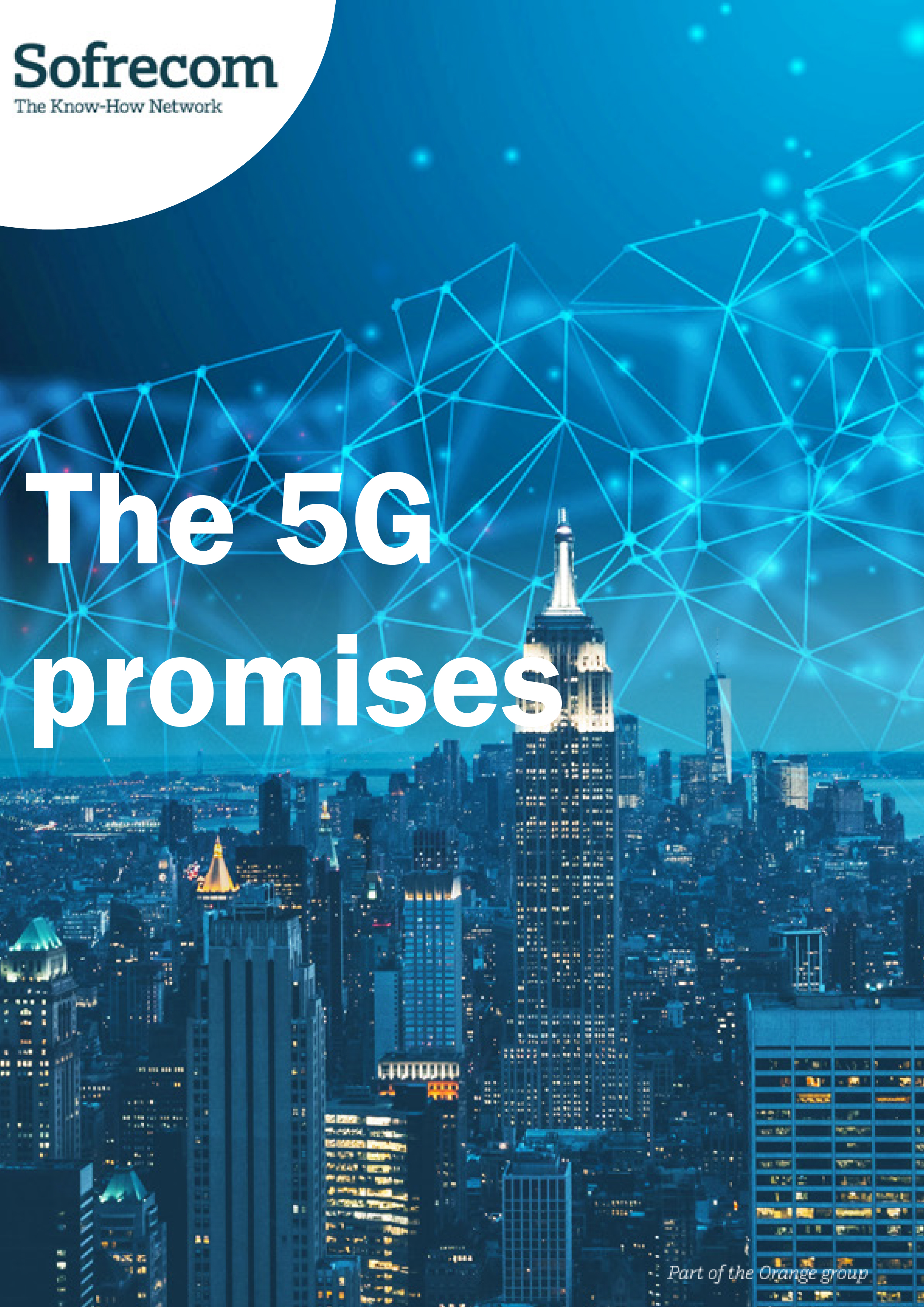
In early 2019, ARCEP opened a “5G pilot” window in France enabling future operators of the new mobile generation to open 5G experimental radio sites that would transmit on the 3.5 GHz and 26 GHz frequencies. While the new technology has not yet been fully standardized, Orange and its competitors have embarked on full-scale tests in some thirty pilot cities. This approach, in which a new mobile network is in effect given a commercial pre-launch, is unprecedented in its scale. What are the benefits for operators and governments?
A promising but complex technology
The aim of ultra-high-speed 5G mobile is to concurrently respond, via a unified technology, to a very wide variety of needs, the respective requirements of which -- in terms of speed, latency, coverage and energy efficiency -- could prove mutually-exclusive: the connected car, industrial automation, IoT, remote surgery, etc.
It will be made of new technological building blocks (radio interface, network architecture) currently being optimized or designed. The latest specifications, which will be determined by releases 16 and 17 of the 3GPP standards agency, are expected in June 2020 and September 2021.
5G will also rely on new frequency bands (3.5 GHz, 1.5 GHz and 26 GHz).
Its arrival will be gradual, as the technology is not mature and the 26 GHz frequencies will not be allocated until 2022.
5G tests and deployments on frequency bands above 6GHz across the world (Source: GSA)
- 348 operators are rolling out or testing 5G.
- 61 operators in 34 countries have marketed a 5G service, including: AT&T and Verizon in the United States, LG Uplus, KT and SK Telecom South Korea, Elisa Finland and Estonia, Orange in Romania, Vodacom Lesotho
Experiments to anticipate the gradual shift towards revolutionary uses
The pilot cities, which operators have equipped with a mesh of 50 to 80 radio sites emitting mainly on 3.5 GHz frequencies, give them perspective to anticipate large-scale deployment. They will also help set the stage, gradually, for the disruptive services which they intend to offer to individual customers and to vertical markets in the three major categories of 5G uses defined by the International Telecommunication Union (ITU): mMTC, eMBB and URLLC.
The advent of 5G is expected to unfold in three stages:
Stage 1: the arrival of enhanced mobile broadband (eMBB).
Since 2019, the first deployments of 5G NR (New Radio) have been carried out in compliance with the 3GPP Release 15 standard known as NSA, or “non-standalone”. The new 5G radio equipment is connected to the 4G LTE network, the core of which remains 4G. Enhanced mobile broadband gives users access to better and faster connectivity for video streaming, on-line games, virtual reality and augmented reality applications. But it stops there. Operators can also better manage capacity in congested areas, improving the quality of service and thus driving customer retention.
Stage 2: Arrival of massive Machine Type Communications (mMTC) after the allocation of frequencies in 26 GHz.
Massive IoT takes up the challenge of accommodating massive amounts of connected objects on a limited amount of space, and with differing service level requirements. The standard requires a connection density of 1 million objects per km² to be supported, when the 4G LPWA standard supports 60,680 objects per km². This stage will take emerging technologies such as big data, AI and blockchain to the next level.
Stage 3: Arrival of communications with ultra-reliable low latency communications (URLLC) enabled by the implementation of a 5G network core.
Ultra-reliable low latency communications will open up access to network slicing, through which the operator will be able to break its network down into slices of virtual networks offering services differentiated on the basis of customers’ critical uses, and therefore their specific needs in terms of capacity, latency and reliability.
To foster experimentation in both these categories of uses, 3GPP defined and published in June 2018 the specifications for the SA or standalone version of the 3GPP Release 15 5G NR standard, based on a 100% 5G architecture.
Many benefits before large-scale deployment
The innovative model of 5G pilot cities and experimental platforms will prove a driver for the commercial and economic success of future roll-outs. They enable operators to explore the challenges found in an innovative technology and to validate technical, organizational and human issues ahead of a launch carrying multiple unknowns. The information gathered from one year of experiments has enabled them to progress on several fronts:
1.Validating technical equipment and suppliers
The full-scale tests make it possible to experience the performance levels – speed, energy consumption, security, etc. – of the 5G equipment offered by major suppliers (Ericsson, Nokia, Samsung, Huawei, etc.), in real-life conditions, to compare them with the promised specifications and prepare calls for tender for future partners. To limit operator CAPEX generated by the gradual and sometimes parallel deployment of equipment in NSA and, subsequently, SA mode, the lower layers of 5G NR must be designed to operate on both a 4G and 5G network core.
2.Supporting upskilling in the deployment teams
In France, the engineering behind 5G will require new and more sophisticated skills of the teams involved in deploying the equipment, both on the operational aspects and the facilities’ configuration and settings. Why? Because the frequency spectrum management mechanisms, whether for uplink or downlink, will be different from those historically implemented. More complex, they will require, first of all, tighter coordination between operators so as to prevent interference, and secondly, synchronization between all the infrastructure equipment, which will need to be set to the same time. While GPS makes these changes feasible, the physical adjustments required will entail costs and are not always possible in outdoor environments.
3.Uniting and mobilizing a 5G ecosystem to pave the way for service launches
The laboratory cities have also served as an opportunity for operators to form partnerships with start-ups, companies, professional federations, research centers, etc. to co-construct new 5G use cases as well as new business models centered around vertical markets: connected mobility, IoT, smart cities, virtual reality, telemedicine, the industry of the future, UHD video, and video games. They are also helping them grow into their new role as operator-integrator, part-Telco/part-IT, able to develop, integrate and operate end-to-end the solutions and applications of the future.
4.Demonstrating its capacity for innovation to future customers
Pilot cities are showcases for innovation on which operators rely to build their credibility, whether with individuals or companies, in the emerging field of ultra-high speed mobile.
5.For governments, contributing to the country’s digital inclusion challenges
By facilitating the transition to 5G and the identification of the most promising use cases, the French Government is bringing the nation closer to its goal of digital inclusion and economic competitiveness. 5G will put certain digital uses within reach of the general public. It will speed up the digital transformation of public services. It will enable the emergence of new applications in all industrial sectors. It is therefore in the interest of governments to encourage these large-scale tests.





